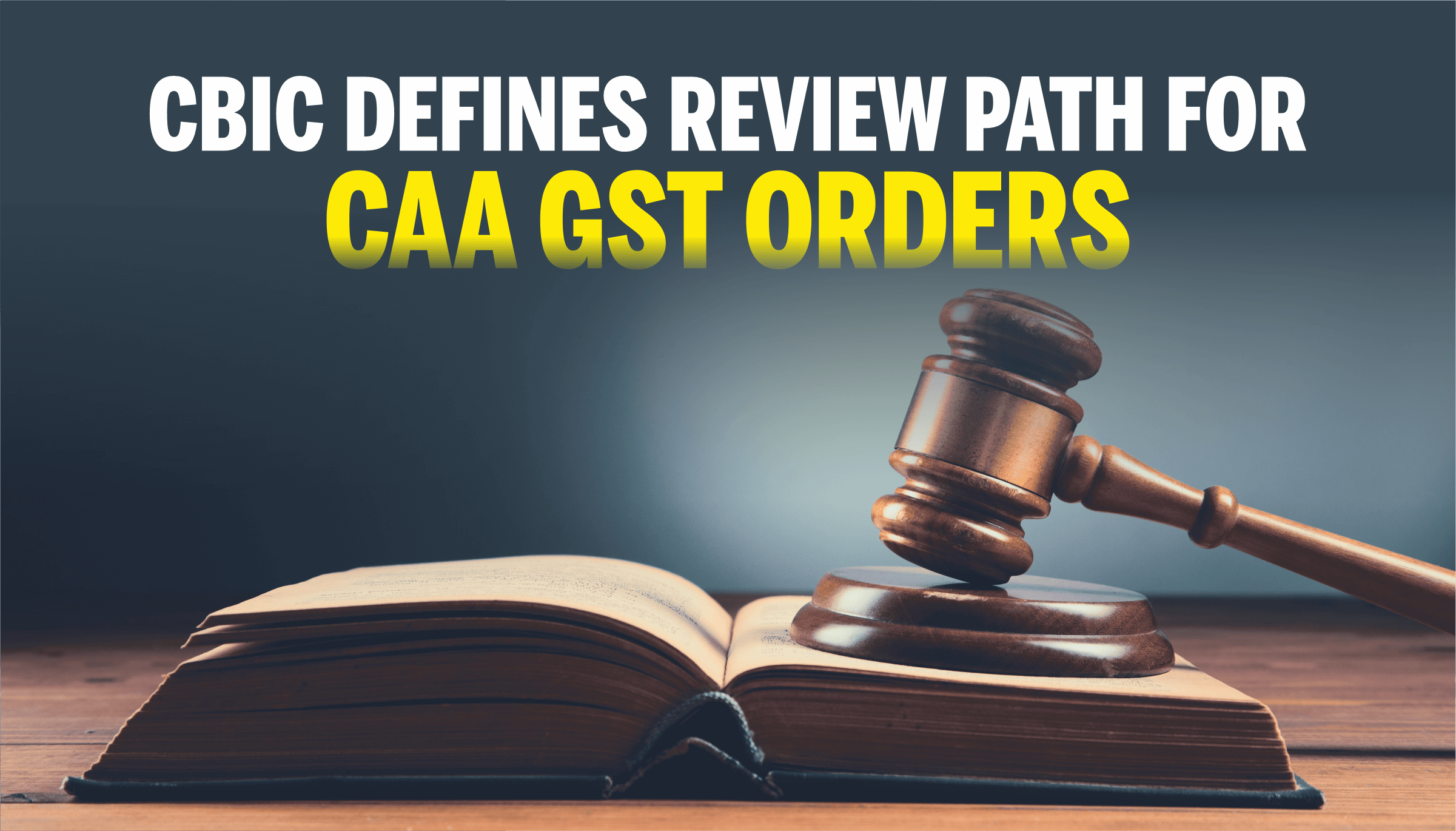CBIC Defines Review Path for CAA GST Orders

In a significant development for India’s indirect tax framework, the Central Board of Indirect Taxes and Customs (CBIC) has issued Circular No. 250/07/2025-GST, dated June 24, 2025, clarifying the appeal, review, and revision mechanism for Orders-in-Original (OIOs) passed by Common Adjudicating Authorities (CAAs) in cases investigated by the Directorate General of GST Intelligence (DGGI).
This circular addresses a longstanding procedural gap in the Goods and Services Tax (GST) regime and is expected to bring greater clarity, reduce jurisdictional ambiguities, and strengthen the overall efficiency of post-adjudication processes.
Background: A Structural Gap in GST Litigation
Over the last several years, the scope and intensity of investigations initiated by DGGI have expanded substantially. Sectors such as online gaming, real estate, banking, insurance, hospitality, FMCG, and e-commerce have come under sustained scrutiny for alleged evasion, misuse of input tax credit (ITC), and complex valuation issues involving multi-jurisdictional transactions.
While DGGI-led investigations are generally adjudicated by officers notified as Common Adjudicating Authorities under Notification No. 02/2017-GST, there remained no formal mechanism to determine the authority responsible for reviewing or hearing appeals against such orders. This led to:
-
Uncertainty regarding jurisdiction for appeal and review
-
Delays in the appellate process
-
Procedural lapses impacting both taxpayers and tax authorities
-
Inconsistent legal interpretations across regions
To address this systemic issue, the CBIC consulted the Union Ministry of Law and Justice before issuing the current clarification.
Key Clarifications Issued by CBIC
The new circular outlines a clear framework for handling appeals, reviews, and revisions of OIOs passed by CAAs. The major clarifications are as follows:
-
Reviewing Authority (Section 107 of CGST Act):
The Principal Commissioner or Commissioner under whose administrative control the CAA (Joint or Additional Commissioner) is posted shall act as the Reviewing Authority. -
Revisional Authority (Section 108 of CGST Act):
The same Principal Commissioner or Commissioner will also function as the Revisional Authority. -
Appellate Authority:
Appeals will lie before the Commissioner (Appeals) having jurisdiction over the Commissionerate in which the CAA is posted, as per the territorial jurisdiction defined in Notification No. 02/2017-GST. -
Departmental Representation in Appeals:
The Principal Commissioner or Commissioner under whom the CAA is posted will represent the department in appeal proceedings and is empowered to designate subordinate officers as necessary. -
Consultation with DGGI Formations:
Reviewing and revisional authorities may formally consult the relevant DGGI formation before deciding on any review or revision of an adjudicated order.
Implications for Stakeholders
For Taxpayers
The clarification offers several advantages to assessees under investigation:
-
Predictability: Taxpayers now have a clear understanding of where to file appeals and how their post-adjudication journey will proceed.
-
Time Efficiency: Procedural clarity eliminates delays caused by jurisdictional confusion.
-
Legal Certainty: Reduces the risk of overlapping or conflicting proceedings across multiple jurisdictions.
-
Compliance Simplification: Reduces compliance fatigue, especially in high-value, multi-state investigations.
For Tax Administration
From the perspective of the department, this structural refinement significantly enhances the efficiency and accountability of the appellate and review system:
-
Clear Role Definitions: Designated authorities can now take timely action without jurisdictional doubts.
-
Improved Coordination: Strengthens alignment between investigating arms (DGGI) and adjudicating/reviewing authorities.
-
Better Litigation Management: Enables timely filing of departmental appeals and consistent legal positioning.
-
Reduced Forum Shopping: The clarification helps prevent inconsistent orders and forum shopping by litigants.
Expert Analysis
The absence of defined review and appeal mechanisms in DGGI-led adjudications had created a serious bottleneck in the post-adjudication phase of GST enforcement. Taxpayers, even in cases with well-founded grounds for appeal, faced delays due to confusion about jurisdiction. Similarly, departmental appeals were often delayed or missed entirely due to the lack of clarity on administrative responsibility.
The latest circular directly addresses this issue by clearly anchoring the review and appeal responsibility with the administrative Commissionerate where the CAA is posted. This is a practical and logical approach that aligns well with the operational structure of the GST administration.
From a legal standpoint, this clarification reduces the scope for technical objections and strengthens the validity of proceedings initiated either by the taxpayer or the department. It also formalises a communication channel between DGGI formations and the reviewing authorities, which could improve the quality and defensibility of review decisions.
Next Steps
CBIC has instructed all field formations to issue trade notices to disseminate this update and ensure uniform implementation. The circular takes immediate effect, and taxpayers under DGGI scrutiny should evaluate their ongoing or upcoming appeal timelines in light of this clarification.
Conclusion
As India’s GST system continues to mature, such procedural reforms play a critical role in reinforcing fairness, predictability, and efficiency in tax administration. By resolving a key structural gap, CBIC has taken a step that will likely reduce litigation, ease taxpayer burden, and ensure stronger alignment within the enforcement ecosystem.
Tax professionals and businesses should take note of this change, especially those involved in multi-jurisdictional GST matters. The clarity brought by this circular not only improves compliance confidence but also enhances institutional accountability within the tax administration.
